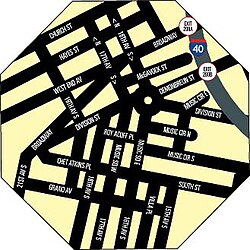
The Country Music Hall of Fame and Museum in Nashville, Tennessee, is one of the world's largest museums and research centers dedicated to the preservation and interpretation of American vernacular music. Chartered in 1964, the museum has amassed one of the world's most extensive musical collections.
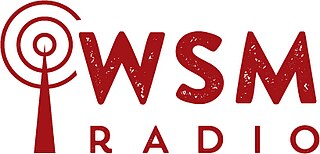
WSM is a commercial AM radio station, located in Nashville, Tennessee. It broadcasts a country music format and is known as the home of the Grand Ole Opry, the world's longest running radio program. The station is owned Ryman Hospitality Properties, Inc. WSM currently operates out of the Gaylord Opryland Resort & Convention Center, and visitors to the hotel may look into the studio 24 hours a day, provided the curtains are open, which they usually are.
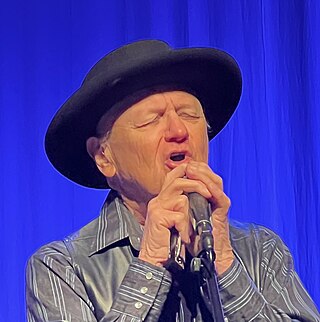
Charlie McCoy, is an American harmonica virtuoso and multi-instrumentalist in country music. He is best known for his harmonica solos on iconic recordings such as Candy Man, He Stopped Loving Her Today, I Was Country When Country Wasn't Cool, and others. He was a member of the progressive country rock bands Area Code 615 and Barefoot Jerry. After recording with Bob Dylan in New York, McCoy is credited for unknowingly influencing Dylan to decide to come to Nashville to record the critically acclaimed 1966 album "Blonde on Blonde".

RCA Studio B was a music recording studio built in 1956 in Nashville, Tennessee by RCA Victor. Originally known simply as "RCA Studios," Studio B, along with the larger and later RCA Studio A became known in the 1960s for being an essential factor to the development of the musical production style and sound engineering technique known as the Nashville Sound. In the two decades the studio was in operation, RCA Studio B produced 60 percent of the Billboard magazine's Country chart hits. The studio closed in 1977.
William Owen Bradley was an American musician, bandleader and record producer who, along with Chet Atkins, Bob Ferguson, Bill Porter, and Don Law, was a chief architect of the 1950s and 60s Nashville sound in country music and rockabilly.
James Staton Foglesong was an American country music producer and executive from the 1950s until the 1990s, based in Nashville, Tennessee.
Paul Cohen was an American country music producer.
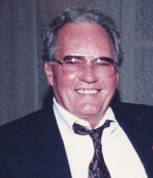
Robert Joseph Beckham was an American country music publisher based in Nashville, who mentored generations of songwriters as head of Combine Music Publishing from 1964 to 1989. He played a pivotal role in the career of Kris Kristofferson and guided other artists including Dolly Parton, Larry Gatlin, Tony Joe White and Billy Swan.
James Harold Shedd is an American music industry executive and record producer best known for his role as producer of the country group Alabama as well as Reba McEntire, Shania Twain and Toby Keith. During his career he has headed Mercury Records and Mercury's sister label, Polydor.
Quonset Hut Studio was a music recording studio established in 1954 in Nashville, Tennessee by brothers Harold and Owen Bradley as Bradley's Film & Recording Studios and later operated as Columbia Studio B. The Quonset Hut was the first commercial recording studio in what would later become known as Music Row. It is now a recording classroom for Belmont University.
The Country Music Foundation (CMF) chartered by the state of Tennessee in 1964, is a non-profit organization dedicated to the preservation and education surrounding country music. The CMF currently employs more than 70 full-time professionals and is "the world's largest research center devoted to a single form of popular music."

Jesse Vernon Frasure, also known as DJ Telemitry, is an American music publisher, record producer, songwriter, and DJ. He has written 22 number one songs and has cuts with various artists including Chris Stapleton, Marshmello, Miranda Lambert, Kacey Musgraves, Thomas Rhett, Leon Bridges, Kane Brown, Jelly Roll, Blake Shelton, Cole Swindell, Meghan Trainor, Florida Georgia Line and more.
Joe Galante is an American music industry executive. He is noted for his role in developing the careers of Waylon Jennings, Dolly Parton, Alabama, Kenny Chesney, Sara Evans, Brad Paisley, Martina McBride, Vince Gill, Clint Black, Miranda Lambert, and The Judds, among others.
Jo Walker-Meador was an American music executive who served as Executive Director of the Country Music Association (CMA) from 1962 to 1991. During her tenure, she created the first Country Music Hall of Fame and Museum, which opened near Music Row and ran from 1967 to 2000, developed the Country Music Association Awards, which first ran in 1967, and launched Fan Fair in 1972. In 1995, Walker-Meador was inducted into the Country Music Hall of Fame.

Starday-King Sound Studios was a recording studio in the Madison neighborhood in northeast Nashville, Tennessee.

RCA Studio A is a music recording studio in Nashville, Tennessee built and founded in 1964 by Chet Atkins, Owen Bradley and Harold Bradley. Originally known simply by the name "RCA Victor Nashville Sound Studios", along with the adjacent RCA Studio B, it became known in the 1960s for becoming an essential factor and location to the development of the musical production style and sound engineering technique known as the Nashville Sound.
Music Industry Coalition is a localized volunteer grassroots partnership of music industry professionals, artists, fans and preservationists mainly organized out of Nashville, Tennessee. The coalition is dedicated to the preservation, nurturing and enhancement of Nashville's musical heritage, culture and community.
Jerry Owen Bradley was an American music executive known for his role in country music. As head of RCA Records in Nashville from 1973 to 1982, Bradley was involved in the marketing and creation of the first platinum album in country music, Wanted! The Outlaws, which reached that mark in 1976. Bradley was inducted in the Country Music Hall of Fame in 2019.
Hubert Long was an American music executive known for his promotion of country music artists from the early 1950s to his death in 1972. Long created a talent agency named for him in 1952 and one of Nashville's first independent talent agencies, Stable of Stars, three years later. A founding board member of the Country Music Association (CMA) and the Country Music Foundation (CMF), Long was posthumously inducted into the Country Music Hall of Fame in 1979.
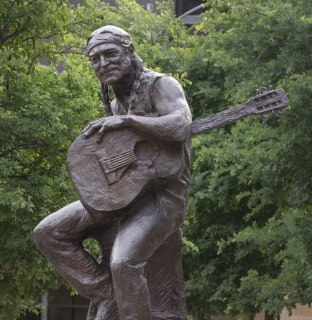
The Willie Nelson statue, or simply Willie, is a bronze sculpture of singer-songwriter Willie Nelson, located in Downtown Austin, Texas. The statue was commissioned to artist Clete Shields by the nonprofit organization Capital Area Statues.
